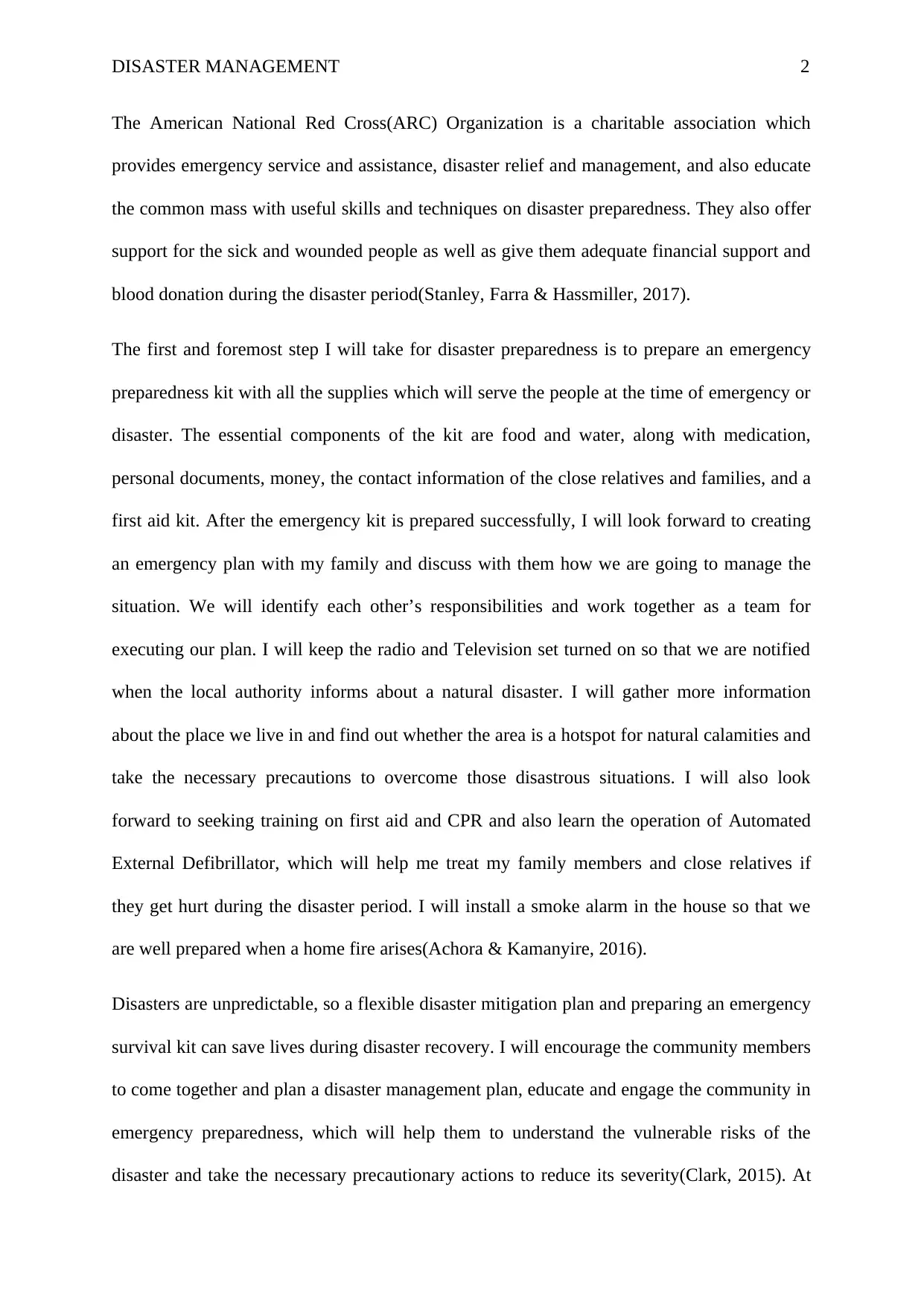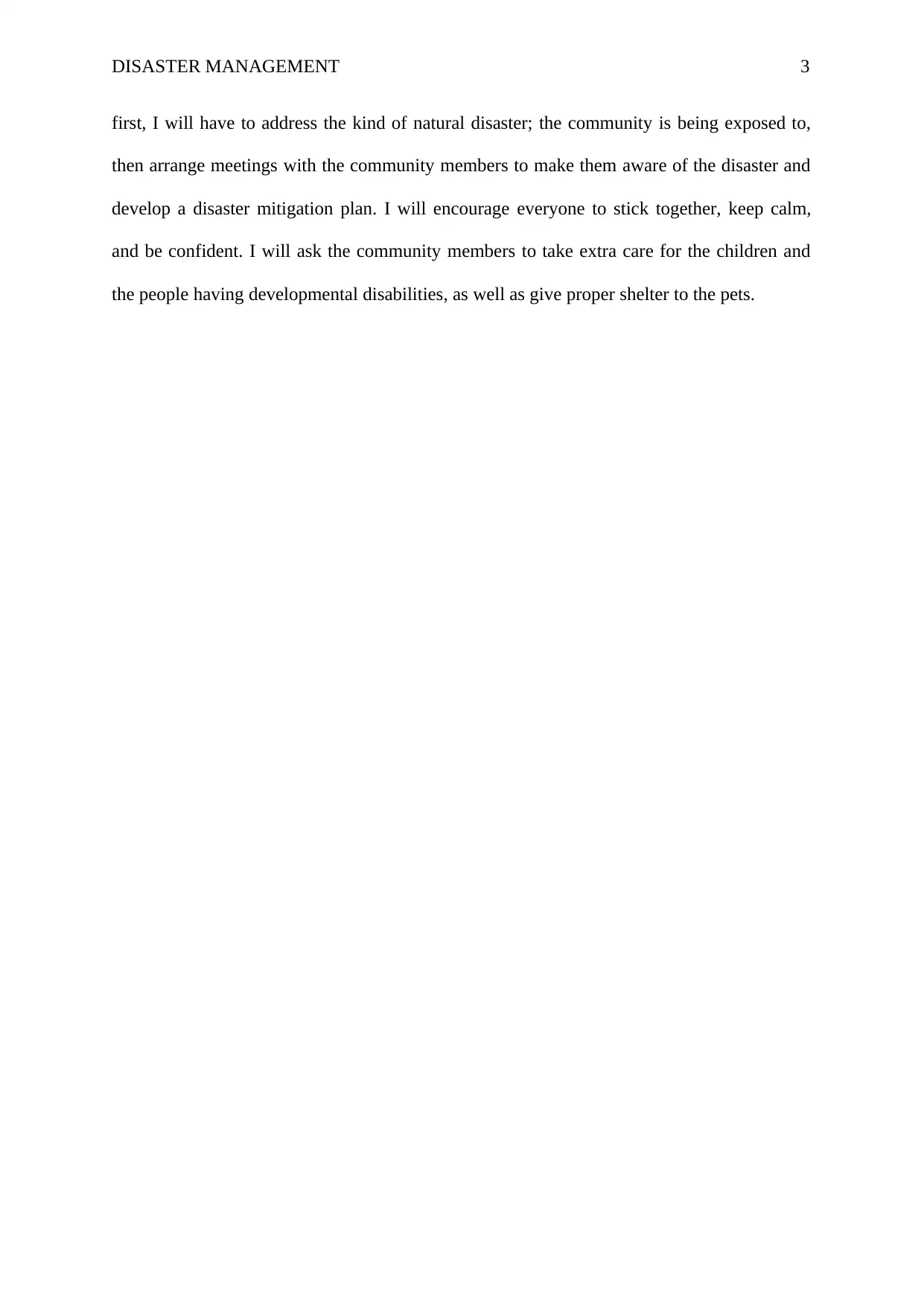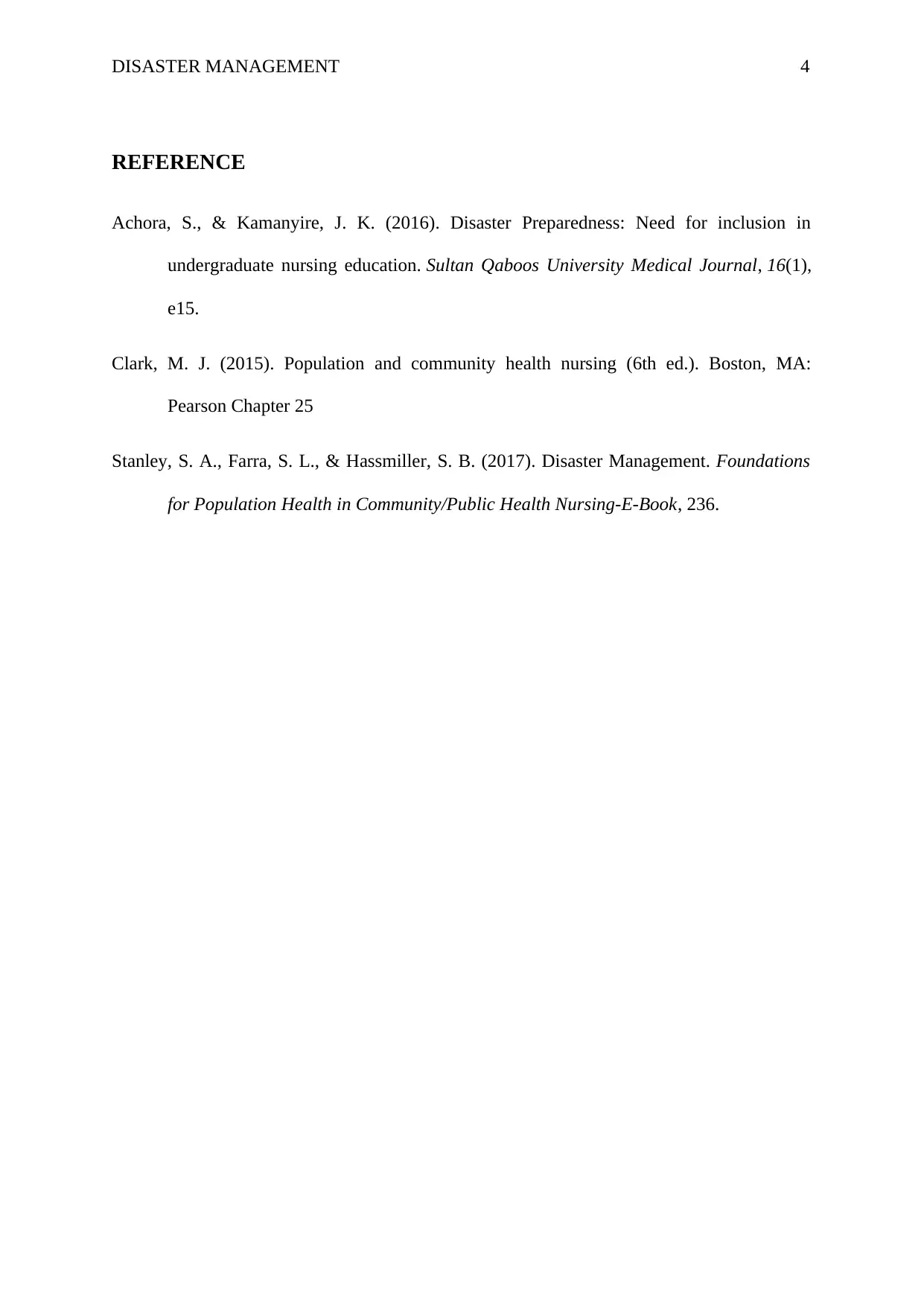Disaster Management: Personal Readiness, Community Outreach Strategies
VerifiedAdded on 2022/08/26
|4
|609
|19
Discussion Board Post
AI Summary
This discussion board post addresses personal disaster preparedness in response to a hypothetical disaster scenario. The student begins by acknowledging the importance of emergency preparedness and highlights the American National Red Cross (ARC) as a key resource for disaster relief and education. The initial steps involve creating an emergency preparedness kit with essential supplies, developing a family emergency plan, and staying informed about potential local hazards. The student emphasizes the importance of seeking first aid training, installing safety devices like smoke alarms, and engaging with the community to create a collective disaster management plan. The post also references scholarly sources to support the discussed strategies, underscoring the need for proactive planning and community involvement in mitigating the impact of natural disasters. The student's response reflects a comprehensive understanding of disaster management principles and a commitment to personal and community resilience.
1 out of 4











![[object Object]](/_next/static/media/star-bottom.7253800d.svg)